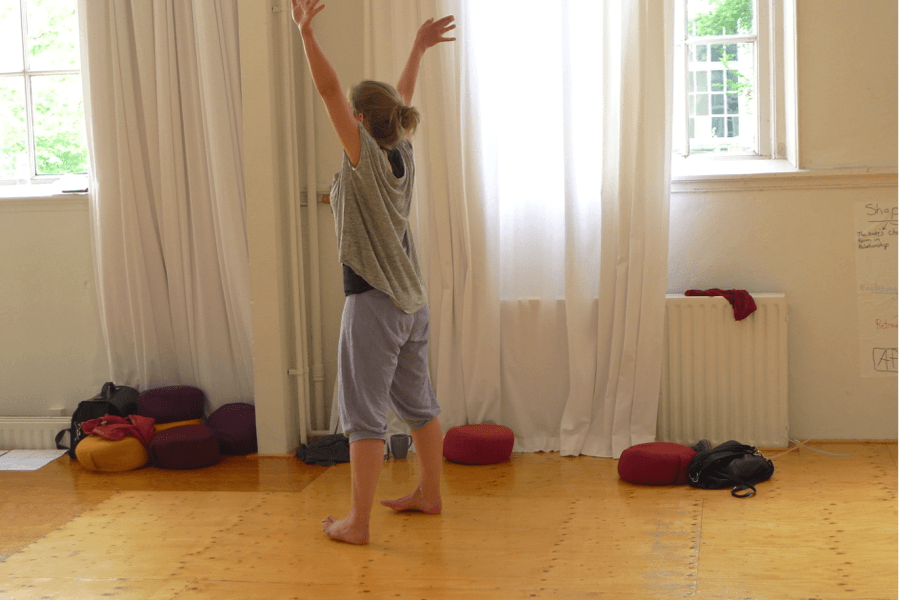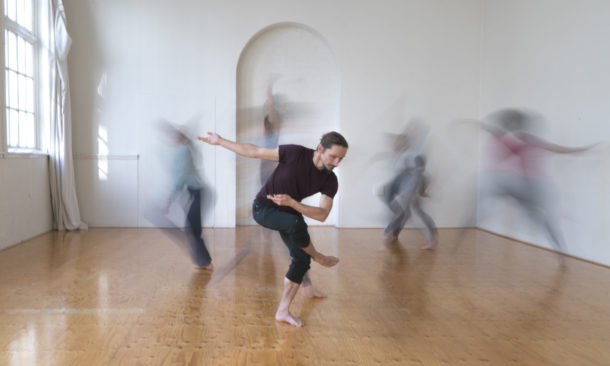Part 2

The artist on stage – pathways in space
It can be a magical experience to perform for a rapt audience. Most of the musicians, actors and dancers want to share this experience with the public. It is the moment that all the preparation and time investment comes together in this special moment. But many performance artists have problems to deal with high expectations of themselves and the audience. Then going on stage can be fraught with angst.
A musician, dancer or actor needs to be connected with the inner world as a base from where s/he can sense and create, and at the same time needs to contact and reach the audience. The performance artist is communicating by using the senses to reach the senses of the audience. The pathways between the inner and the outer world need to be extremely open.
The tangible experience of the Personal Space and the activity of the body in approaching and owning that space is an important tool in achieving a better alignment, more connection toward the performance and the environment, and thus improves the ability to perform and to relate to the public.
The ‘personal space’ is the space around the body that describes the direct access between our bodies and our immediate surroundings. The ‘personal space’, that is also called the ‘Kinesphere’ or the reach-space, offers many ways to explore our interrelatedness with our environment. Even the smallest movement that we take as breathing for instance, is a spatial movement. The lungs are opening the front, the back, the sides, the upper and the lower space of our torso. There is a constant scattering and gathering of our torso. Through getting aware of our actual moving into space and returning closer to our center, we start to connect our inner to our outer world. The body can reach out and return to its center. We give and we take, we move in and move out, there is a continuous exchange of inner and outer realms.
No fear to perform
Performance can cause a lot of pressure, because all the expectations of oneself and the imaginary expectations we project onto the audience are coming together in this very moment. Therefore there can be a tendency to experience the audience as an enemy that we need to attack or flee from. In that case we often lose touch with the actual moment and come into automatic reactions of anxiety.
It will be helpful to regain a healthier perspective of the interpersonal space during the performance. We can train to bridge the inner experience to the outer environment, to create more communication during the performance. Creating exercises that warm up presence, attention, and the ability to connect, is essential. In other words, a preparation is needed that connects the inner world (bodily, emotionally, and psychologically) to the world around us. The audience then can give us the energy and the extra spark to bring our performance to a higher level. The concept of attending to the space around us in circular ways, from Self to Other and from Other to Self, can help us to be part of the experience rather than to feel separate from it. These spatial pathways can change the way we experience the moment of performance. Therefore the moment of performance can be what it actually is meant to be – a shared experience created by the artist and the audience together.
Literature
Bloom, K. (2006). The Embodied Self: Movement and Psychoanalysis. London: Carnac.
Hackney, P. (2002). Making Connections: Body Integration through Bartenieff Fundamentals. New York: Routledge.
Studd, K. and Cox, L. (2013). Everybody is a Body. Indianapolis: Dog Ear Publishing.
Bainbridge Cohen, B. (1993). Sensing, Feeling and Action: The Experiential Anatomy of Body-Mind Centering. Northampton: Contact Editions.
Hartley, L. (1994). Wisdom of the Moving Body: An introduction to Body-Mind Centering. Berkeley, California: North Atlantic Books.

